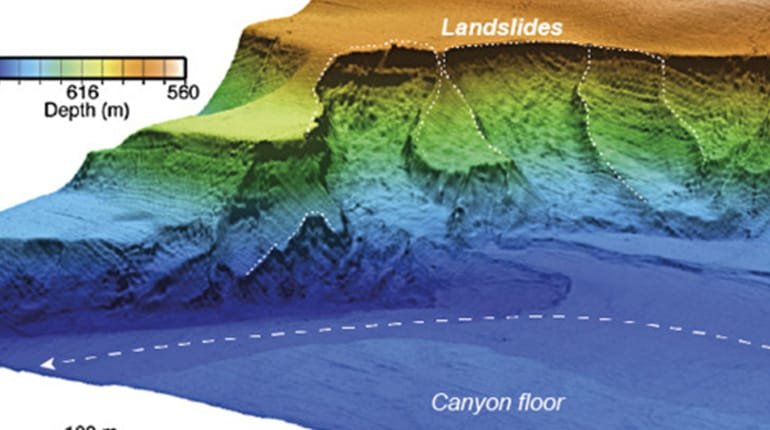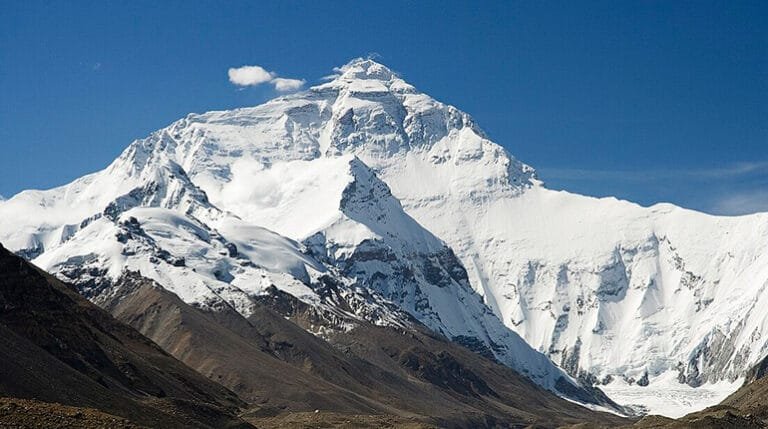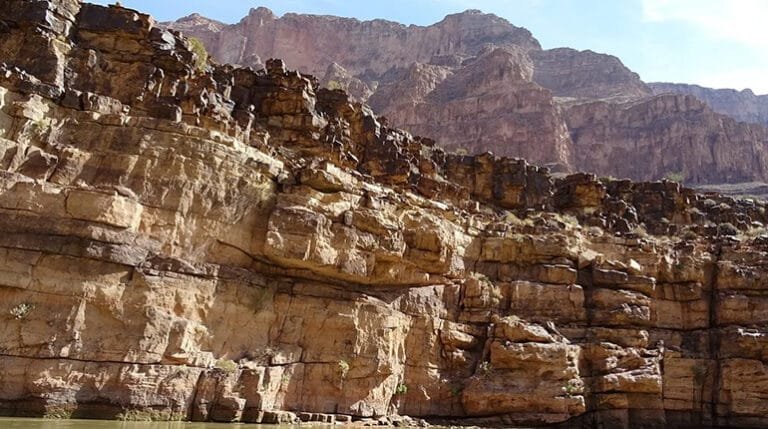Submarine Canyons and Evidence of Catastrophic Erosion

The debate around the geological features of our planet, particularly the submarine canyons, often intersects with the discussion of the biblical Noah’s Flood. For young Earth creationists, the cosmos and Earth’s geological processes are viewed through a lens of scripture, suggesting that many of the Earth’s processes and formations occurred rapidly rather than over millions of years. Within this framework, submarine canyons stand as compelling evidence of catastrophic erosion, supporting a narrative that agrees with the biblical account of a worldwide flood as described in Genesis.
This article aims to explore the scientific aspects of submarine canyons while considering the implications of catastrophic forces at play. We will delve into the formation, development, and characteristics of submarine canyons through the lens of a young Earth perspective, arguing that these geological structures provide profound evidence supporting the notion of a global flood rather than slow, gradual geological processes. By examining their formation and the erosional processes involved, we can provide a cohesive argument that aligns with a biblically accurate worldview.
Understanding Submarine Canyons
Submarine canyons are deep, narrow valleys that cut into the continental slope and rise, extending offshore into the sea. These canyons rival terrestrial canyons like the Grand Canyon in scale and depth; some are over 1,000 kilometers long and reach depths of more than 3,000 meters. Major examples include the Monterey Canyon off California and the Hudson Canyon near New York.
Characteristics of Submarine Canyons
Submarine canyons possess distinct features, including steep sidewalls, a V-shaped cross-section, and a variety of sediment deposits. Often, they are associated with major river systems, suggesting a potential connection between terrestrial and marine erosional processes. The characteristics of these canyons raise questions primarily about their origin, age, and the forces that sculpted these immense underwater structures.
Formation Processes: Gradual vs. Catastrophic
Traditional geological models propose that submarine canyons formed through a variety of processes over millions of years, including the slow erosion by river systems, sediment movement, and sea-level change. However, from a young Earth creationist perspective, the notion of gradualism fails to account for the scale and speed at which these canyons could have formed, particularly during a global catastrophic event like Noah’s Flood.
Catastrophic Erosion
Catastrophic erosion refers to rapid processes that lead to significant geological change. Several key points illustrate how submarine canyons could be formed through such actions:
- Intense Water Flow: The global flood experienced by Noah could have unleashed vast volumes of water over a short period, generating extreme currents capable of eroding the landscape rapidly.
- Increased Sediment Transport: As floodwaters rushed over land, they would carry vast amounts of sediment into the ocean. This would enhance erosion on the continental slope, leading to the formation of canyons.
- Subaqueous Landslides: The flooding could trigger underwater landslides, rapidly reshaping the seafloor and cutting into existing geological formations.
- Comparison to Modern Events: Observations of modern flood events showcase that floods can produce remarkable erosional landscapes in a matter of days or weeks—far quicker than traditional geology would suggest.
Evidence from Erosion Patterns
The intricate patterns and depths of submarine canyons can be likened to those formed during significant erosive events. By analyzing existing canyons, scientists and geologists can draw parallels between marine and terrestrial erosion. These comparisons underline the argument that submarine canyons are missing the slow progression posited by uniformitarianism, instead supporting the idea of catastrophic processes aligned with the biblical narrative of the Flood.
Comparative Analysis with Terrestrial Canyons
Many of the characteristics of submarine canyons mirror those of terrestrial canyons, shaped by accelerated erosion. For instance, the Grand Canyon exhibits evidence of consistent and powerful water flow, which raises questions about the era in which it was shaped. The scale and depth found in submarine canyons suggest similar processes could have played a role during a period of rapid geological change.
Geological Features Linked to Flood Dynamics
The geological features we encounter today can often be traced back to the dynamics present during a global flood scenario. The argument posits that some observable features of submarine canyons can be analyzed through the following considerations:
- Layered Sediments: Many submarine canyons reveal layers of sediment that suggest rapid deposition, consistent with the idea of sediment being rapidly washed away during massive flooding.
- Rock Formations: Unique rock formations found within and around canyons suggest extensive and abrupt changes in environmental conditions.
- Fossil Evidence: Many submarine canyons contain fossils indicative of rapid burial and preservation—conditions compatible with a flood scenario.
The Role of Catastrophism in Geology
The perspective of catastrophism within geology emphasizes significant, rapid changes as pivotal in shaping Earth’s landscape. By considering submarine canyons through the lens of catastrophic events, one can question the conventional timeline presented by secular geology. The insights gleaned from catastrophism offer a robust framework that aligns with biblical accounts, reinforcing the idea that considerable geological features were formed during short, acute episodes rather than long uniform processes.
Scientific Analysis and Civilizational Impact
The implications of understanding submarine canyons as products of catastrophic erosion extend beyond simple geological analysis. They challenge long-held assumptions about Earth’s age and the processes that govern geological changes. Understanding these structures within the biblical framework provides a foundation for the young Earth perspective, suggesting a history marked by divine intervention rather than endless slow processes.
Countering Secular Explanations
While secular interpretations of submarine canyons involve vast time scales and gradual processes, these models have been criticized for their inconsistencies and inability to account for certain evidence. For example, some features of submarine canyons—including abrupt changes in canyon morphology—fail to align with the slow deposition models typically favored by mainstream geology.
- Discrepancies in Erosion Rates: The erosion rates assumed by traditional models, when mapped over millions of years, do not seem sufficient to account for the monumental shifts observed in submarine canyons.
- Timeline Conflicts: The vast geological timeframes often attributed to Earth’s processes have been shown to conflict with newly discovered evidence from various geological surveys and studies.
Conclusion
Submarine canyons present an intriguing avenue of study when viewed through the lens of young Earth creationism. The characteristics and formation processes of these underwater valleys may provide substantial evidence of catastrophic erosion linked to a global flood. By employing a biblical perspective, one can argue that these geological features are not merely products of slow erosion but instead are indicative of rapid and profound changes during a catastrophic flood event, as described in scriptural accounts.
The study of submarine canyons thus becomes a potent illustration of how geological evidence aligns with biblical narratives. By integrating scientific observation with a critical worldview rooted in faith, one can foster a deeper understanding of Earth’s formation and history, all while elucidating the impact of the Flood not just on mankind but on the very planet we inhabit. In a world increasingly skeptical of biblical literalism, the evidence provided here serves to strengthen faith and understanding among believers, illuminating the relationship between Scripture and science in a young Earth context.





